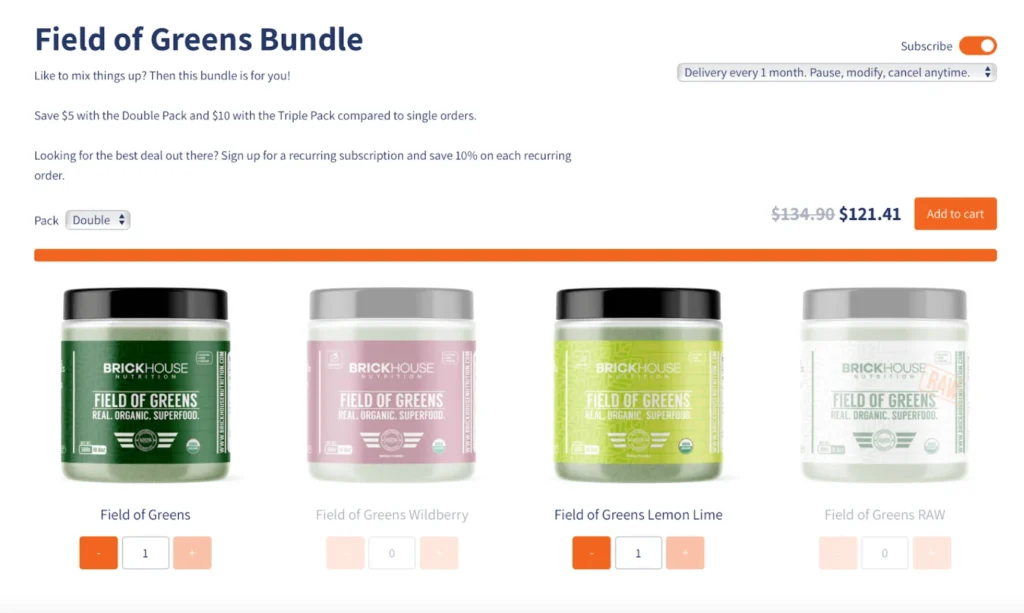In the ever-evolving ecommerce industry, there’s no shortage of terms and acronyms to keep track of. But among these, gross merchandise value—sometimes known as gross merchandise volume—or GMV, stands out as one of the most critical metrics for online retailers. Why? Because GMV is a direct indicator of your store’s growth, providing a snapshot of total sales performance over a given period.
Consider this: Global ecommerce sales are projected to reach nearly $8 trillion by 2026, with GMV playing a pivotal role in measuring that explosive growth. Understanding and tracking GMV isn’t just about staying competitive—it’s about gaining the insights needed to drive sustainable revenue growth.
Understanding GMV and how to calculate it is crucial for developing a successful ecommerce business model. By mastering this metric and analyzing your financial data, you’ll be equipped to make informed decisions that drive higher total sales. In this post, we’ll explore seven specific strategies you can use to boost your GMV.
Key takeaways
- Gross merchandise value is an important metric for ecommerce brands to analyze.
- When GMV goes up, it can be one positive indicator of the health of a business.
- GMV is just one of the many financial metrics that merchants should use to track their success.
- There are several strategies for increasing GMV including bundling, loyalty programs and subscriber-only benefits.
GMV definition and importance in Ecommerce
As it’s defined in our ecommerce glossary, gross merchandise value is “a metric that represents the total monetary value of all goods and services sold by a merchant in a given period.” It is typically measured on a quarterly or annual basis, and is a metric that many in the ecommerce industry rely on for growth measurement.
GMV can also be used to determine the overall health of a merchant, since it looks at both the volume and value of the products being sold. When your gross merchandise value is up, it can reflect positively on the health of your business.
Comparing GMV with net sales: understanding the differences
Since gross merchandise value does not account for expenses like advertising or marketing costs, it cannot be viewed as the sole indicator of success for your ecommerce store. Net sales and net income must also be accounted for in order to gain a full picture of your business’s success. Other financial metrics that should be considered include:
- Profit margin per product
- Customer acquisition cost (CAC)
- Customer lifetime value (LTV)
- Net merchandise value
- Churn rate
- Average order value (AOV)
- Conversion rate
How is GMV calculated?
To calculate gross merchandise value for your ecommerce store, you can multiply the sales price charged to customers by the amount of merchandise sold. Depending on your business, GMV can also represent your gross revenue. In order to achieve revenue and GMV growth, you’ll have to sell more products, or increase prices.
Advantages & disadvantages of GMV
As with any measure of your company’s growth, there are pros and cons to consider when talking about gross merchandise value. It’s crucial to look at additional metrics along with GMV when you want to determine the success of your ecommerce store.
Advantages of gross merchandise value
Company performance insights
The biggest advantage of measuring GMV is that, when considered in the context of other key performance indicators (KPIs), it can give valuable insight into how well your ecommerce brand is performing. Analyzing the number of items sold and the price at which they are selling can offer crucial data for running your business.
To get the best insight, merchants should measure their gross merchandise value once a quarter. If it is only measured annually, there is less opportunity to make changes in how you market or sell your products. Instead, if GMV is down one quarter, your store can identify the cause, then adjust and try to make up for that loss.
Comparative measure over time
Measuring gross merchandise value frequently—or at least once a quarter—will help your company analyze growth and success over time. By regularly measuring GMV, you can compare the current quarter sales to those of the last year. Plus, you can look at growth year over year, along with other metrics. GMV acts as a way to analyze sales numbers and see how your business is performing, which will be helpful as your ecommerce store grows and expands.
Disadvantages of gross merchandise value
Doesn’t reflect profitability
Merchants shouldn’t count on gross merchandise value to show their profitability. Companies that want to learn if they are profitable or not have to take their net income (revenue minus expenses) and divide it by revenue (or net sales). To get a profit margin percentage, multiply this outcome by 100.
Because gross merchandise value only takes into account the number of products sold and their cost to consumers, there’s no way to show how much profit your company is making from those sales. Taking into account the other financials associated with profit, like production and shipping costs, will give your company a better picture of profitability.
Doesn’t account for every factor
As mentioned, sellers have to consider other factors in order to get a better idea of their overall company health. GMV won’t be up to that task, since there are so many other factors to consider. Looking at your business’s revenue along with GMV will help you avoid seeing a false financial picture.
Gross merchandise value is calculated before the deduction of expenses and fees that go along with the product, meaning it doesn’t account for every financial factor that your ecommerce store should be analyzing. Businesses must also take into account:
- Discounts
- Advertising costs
- Delivery costs
- Returns
- And more
Doesn’t show the whole picture
So, if there are a number of other financial factors that have to be considered when looking at your company’s overall growth and success, then GMV won’t show you the whole picture. As a financial metric, it can be limiting—which is why it’s crucial to recognize gross merchandise volume for what it is, and rely on other metrics in addition to GMV.
Some factors that are important to consider to view the whole picture of your business health include:
- How much revenue is from repeat customers
- The number of customers visiting your online store
- How much you’re spending on ads and marketing
- The cost of manufacturing your products
Doesn’t express the true value of goods
Without taking into account the costs associated with producing your goods, GMV can’t express the true value of what you’re selling. Instead, it gives you a snapshot of growth based on unrefined data. To see the true value of your goods, you have to factor in these production costs.
7 strategies to increase gross merchandise value
There are a number of strategies to increase your GMV in ecommerce settings. When your company makes moves to increase the amount customers are spending when they shop with your store, those efforts can also positively impact gross merchandise volume. Continue reading to learn about three strategies for increasing your GMV.
Bundling
Giving consumers the option to bundle their products can help you boost your company’s GMV by increasing the number of goods sold. Typically, bundles come with a discount, which will make your customers happy and help you get rid of more inventory. Bundling can also increase your AOV—merchants like BRICKHOUSE nutrition have boosted AOV by 75% using bundles.

Cross-selling
Another effective way to increase your gross merchandise value is by cross-selling. By showing customers additional products that would add value to their purchase, you are automatically creating an opportunity to increase AOV and with it, GMV.

Primal Kitchen offers cross-sell options when you add a product to the cart, such as recommending ketchup when you purchase mayo.
Free shipping
One of the simplest ways for ecommerce brands to boost their GMV is by setting a minimum purchase threshold for free shipping. For example, offering free shipping on orders over $50 can incentivize customers to spend more in your online store. This strategy directly increases your GMV as customers are motivated to reach the free shipping threshold.
Billie, the popular razor subscription brand, exemplifies this approach by offering free shipping on orders over $15. This low-cost threshold encourages customers to add more items to their carts, resulting in a higher average order value (AOV) and driving significant sales volume for Billie.

Billie offers free shipping on all orders over $15, making for a smart strategy to increase AOV.
Loyalty programs for subscribers
Implementing a loyalty program that rewards subscribers for staying with the service can encourage repeat purchases and higher spending. Points can be earned for each recurring payment and redeemed for discounts, free products, or exclusive offers, leading to an increase in GMV over time.
Referral incentives for new customers
Offering incentives for customers who refer others to your brand can drive new sales while increasing GMV. For example, giving both the referrer and the new customer a discount on their next purchase can encourage more people to sign up and spend.

Quip’s referral program drives new customer acquisition through word of mouth, increasing overall sales and revenue.
Auto-refill and save options
Allowing customers to opt into auto-refill programs with a discount for each automatic renewal can ensure steady recurring revenue and boost GMV. This is particularly effective for consumable goods where customers appreciate the convenience of not having to reorder regularly.
Subscriber-only benefits
Boosting GMV can be effectively achieved by encouraging customers to upgrade their subscription plans or add premium features. Offering subscriber-only perks, such as early access to new or exclusive products, can entice customers to spend more. Hello Bello, a personal care company for infants, strategically uses unique or limited-time diaper designs as a subscriber-exclusive benefit. This not only drives curiosity and a sense of exclusivity but also incentivizes customers to subscribe or upgrade, ultimately increasing overall GMV.

Hello Bello offers up fun, seasonal and unique diaper designs that can only be purchased as a subscriber.
Utilizing GMV as a helpful tool for ecommerce analytics
To truly harness the power of gross merchandise value (GMV) in your ecommerce strategy, it’s essential to not only understand this key metric but also actively use it to drive your business forward.
By regularly tracking GMV and implementing strategic initiatives like bundling, cross-selling, and loyalty programs, you can significantly increase your store’s sales performance and overall growth.
Remember, GMV is more than just a number—it’s a valuable tool that, when used correctly, can guide your decisions and help you achieve sustained success in the competitive ecommerce landscape. Don’t just measure your GMV; take action to elevate it and watch your business thrive.



